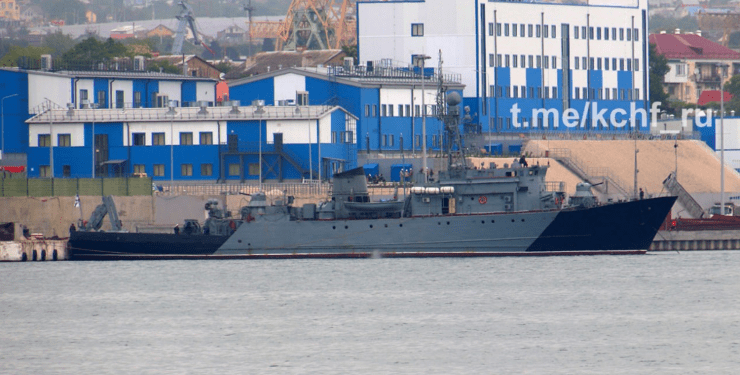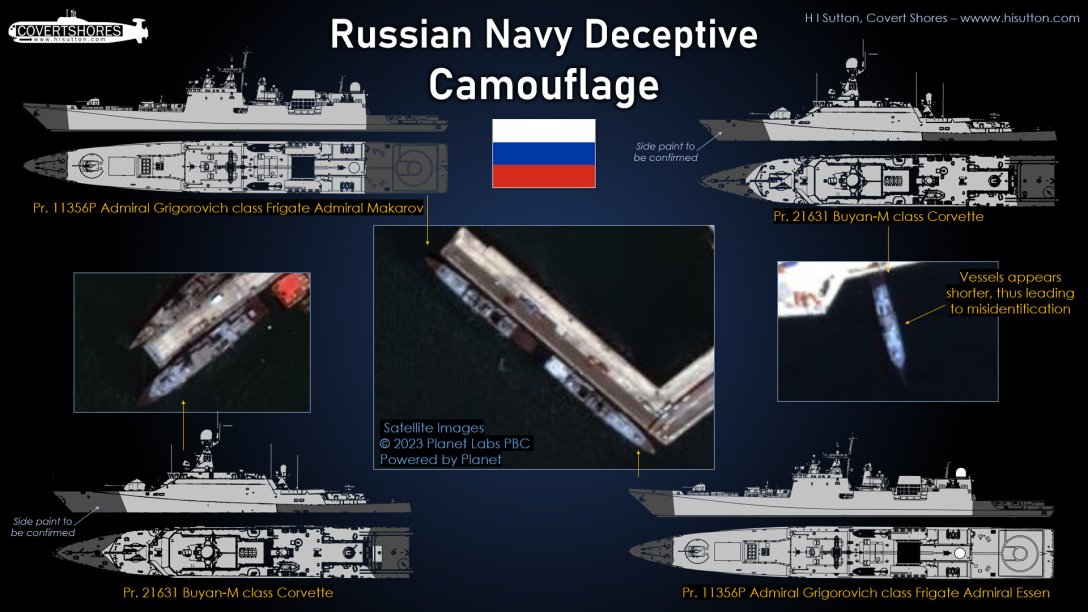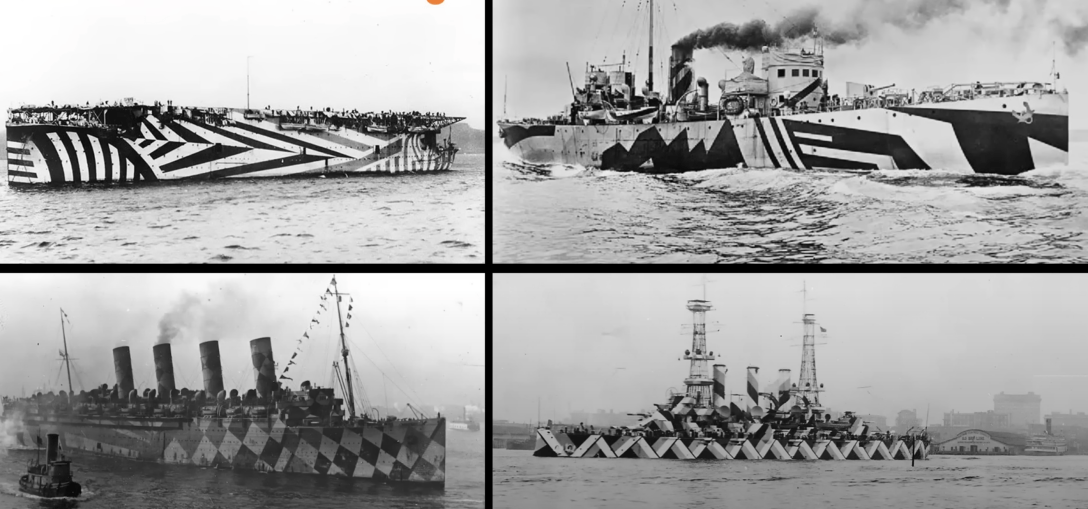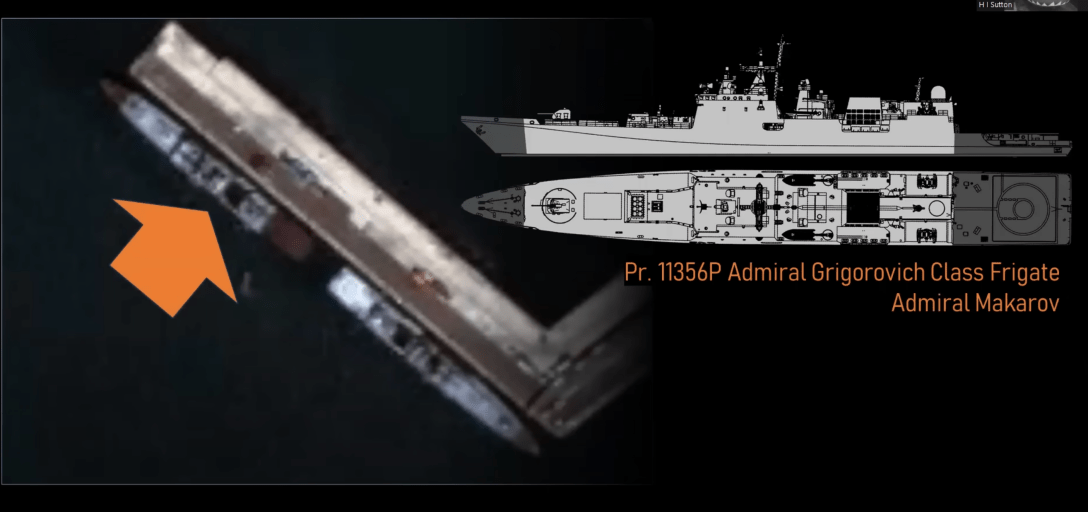
After the attacks on Ukrainian maritime drones, Russia is trying to find ways to mislead both the “interns” and the operators of such devices.
The Russian Black Sea Fleet continues the practice of camouflaging its fleet in occupied Sevastopol. OSINT analyst H I Sutton told what goals the occupiers may pursue.
For the first time, the Russian Federation learned about the camouflage of the ship on June 22, when the frigate Admiral Essen was spotted painting in Sevastopol Bay. Since then, satellite imagery has captured three more ships that were painted in the same way, namely the Admiral Grigorovich and two Buyan-M corvettes. All of them are carriers of Kalibr cruise missiles, so the analyst notes that the choice of ships was not accidental.

On all ships, the front and back are painted very dark or black. The practice of various camouflage goes back to the Second World War, when paint was used to blur the silhouette of ships.

Nowadays, applying camouflage makes little sense, as there are radars and other technologies that allow detecting a watercraft without visual contact. However, Sutton notes that Russia wants to achieve two things:
- to complicate the activities of Ukrainian surface attack drones;
- hide the ship’s silhouette from satellites.
Ukrainian attack drones have mostly low-resolution cameras. If paint is applied to the bow and rear of the ship, an inexperienced operator may not be able to recognize the actual size of the ship under certain conditions. If the Ukrainians use artificial intelligence technologies to help targeting, the disguise scheme could be even more effective, the author says.

The second goal of the Russians is to hide the ships from satellites. Most OSINT analysts use satellite imagery, which can be of poor quality. This makes the silhouette of an object difficult to identify, and with camouflage on both sides, it can be even more difficult. Often the Black Sea near ports seems almost black, so the ship’s silhouette can blend in with the environment.
“This is unlikely to work against experienced analysts who traditionally work with high-resolution images. However, it could catch a few unwary professionals in a hurry. As always, it all depends on the context,” says Sutton.

